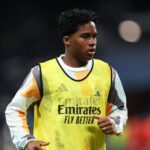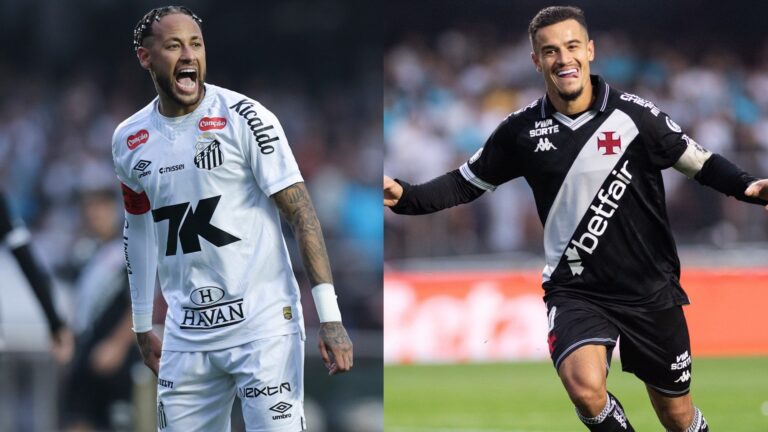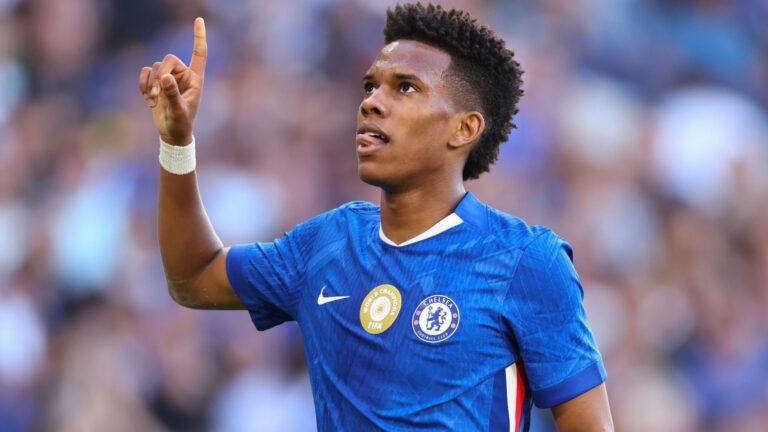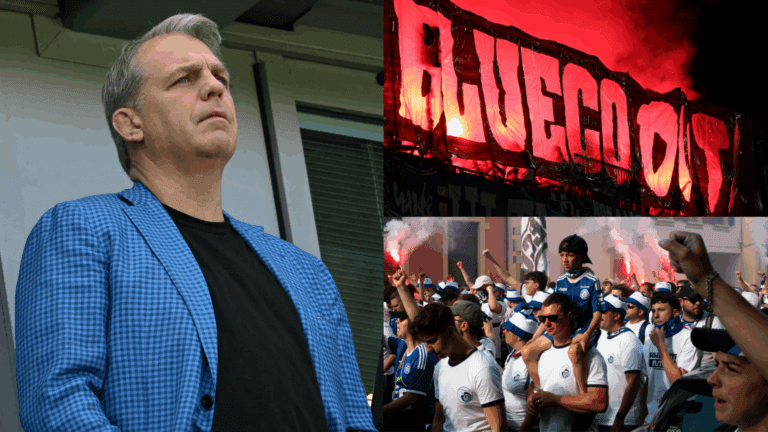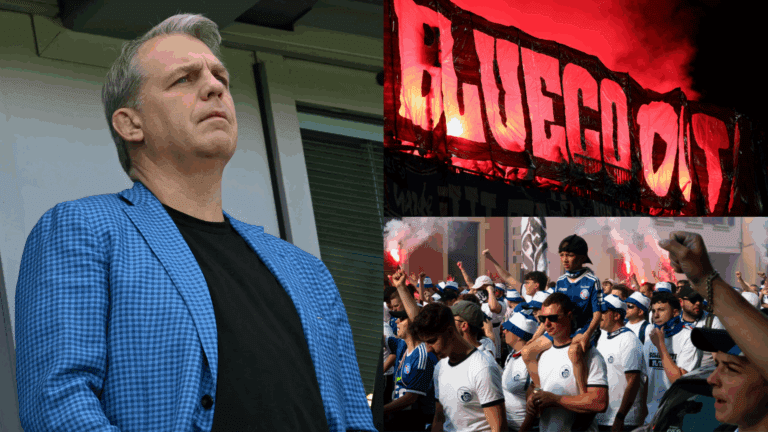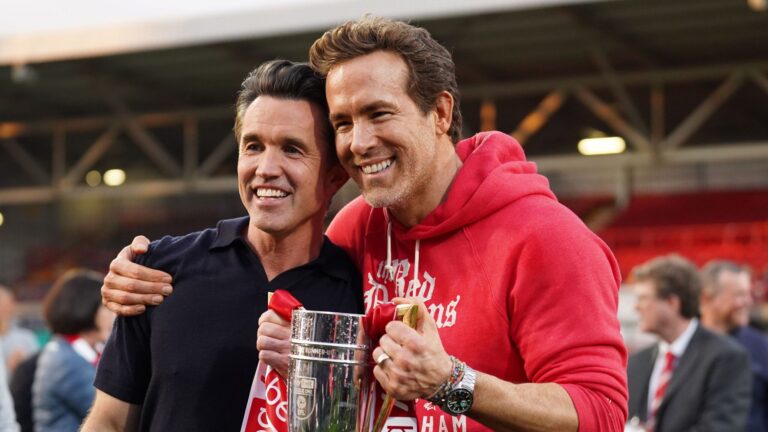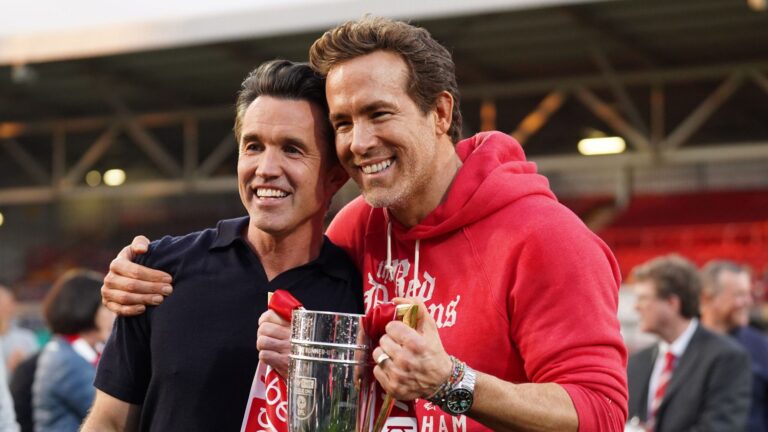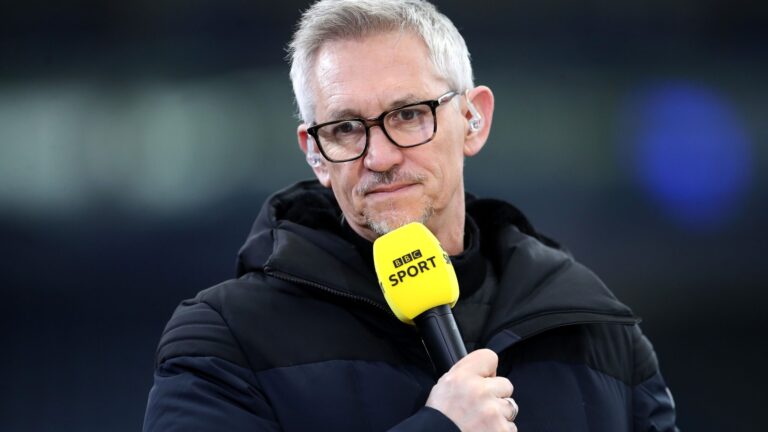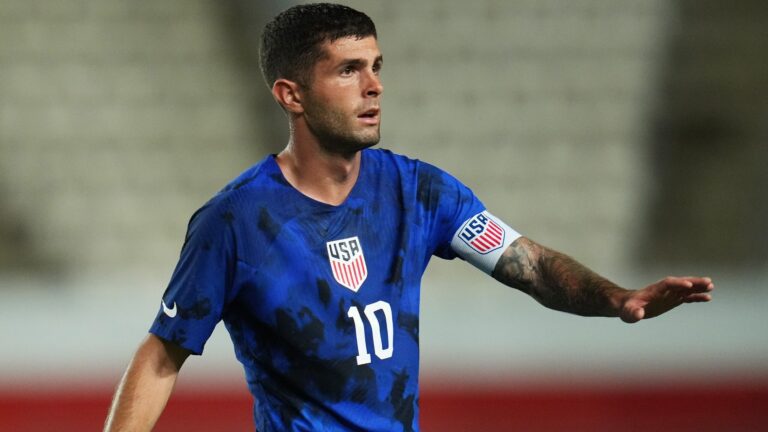Endrick’s Trainer Accompanies Him to Japan Honeymoon as Real Madrid Maps Out Recovery for Hamstring Injury
Endrick, the rising Brazilian striker, faces a challenging recovery from his hamstring setback, with his personal trainer now en route to Japan to ensure he’s back in top form. This development highlights Real Madrid‘s commitment to the young talent’s health as he balances personal milestones with professional demands.
- Endrick’s fitness coach set to accompany him in Japan
- Real Madrid establishes strict timeline for his rehabilitation
- Hamstring issue resurfaced in early July




Endrick’s Support System During Honeymoon in Japan
Based on insights from journalist Mario Cortegana at The Athletic, Endrick’s fitness expert is preparing to head to Japan to team up with the talented forward amid his post-wedding getaway. Endrick and his partner, Gabriely Miranda, recently marked their union in a warm, exclusive gathering with their nearest companions and relatives in Madrid, emphasizing their focus on personal life even as career hurdles persist.
Balancing Personal Life and Professional Recovery
This move underscores how elite athletes like Endrick navigate major life events alongside health challenges. For instance, while many stars opt for complete seclusion during such times, Endrick’s choice to involve his trainer reflects a proactive strategy, similar to how other sports figures incorporate recovery routines into vacations to stay ahead in their careers.
Real Madrid’s Recovery Strategy for Endrick’s Hamstring Injury
Endrick had been close to making his return to the starting lineup, but an unfortunate recurrence of his hamstring problem from the May La Liga encounter with Sevilla has delayed his progress. Recent reports, including updated medical assessments, indicate that the player won’t rejoin the team until September, potentially missing Brazil‘s national team selections under coach Carlo Ancelotti for the upcoming international fixtures. With recent statistics showing that hamstring injuries in young players like Endrick can take 6-8 weeks for full healing, this timeline aligns with broader trends in sports medicine.
Implications for Endrick’s Future at Real Madrid
After facing limited opportunities on the pitch under Ancelotti, Endrick is eager to build rapport with the incoming manager, Xabi Alonso, ahead of the 2026 World Cup. To achieve this, the forward must prioritize his rehabilitation efforts and aim for a swift comeback. Experts suggest that dedicated recovery programs, incorporating the latest in physiotherapy techniques, could reduce future injury risks by up to 30%, based on current sports science data.
Upcoming Challenges in La Liga
Real Madrid’s squad will begin the 2025-26 La Liga season on August 19 against Osasuna at Santiago Bernabeu without Endrick in the mix. This absence could prompt the team to rely more on emerging talents, offering a fresh dynamic to their strategy as they defend their title. Endrick’s determination to return stronger will be key to his long-term success in the competitive world of football.
Endrick’s Injury and Real Madrid’s Recovery Timeline
Endrick, the talented Brazilian striker who recently joined Real Madrid, has been making headlines not just for his on-field prowess but also for his off-field challenges. Following a recent injury during a match, Real Madrid’s medical team has outlined a detailed recovery timeline to ensure the young forward returns to peak condition. This timeline typically involves a combination of rest, physiotherapy, and personalized training, which has sparked interest among fans and sports enthusiasts worldwide.
The injury, believed to be a muscle strain, occurred during a high-intensity game, highlighting the physical demands on young players like Endrick. Real Madrid’s recovery plan emphasizes a phased approach: initial rest and inflammation reduction in the first two weeks, followed by light rehabilitation exercises in the next four to six weeks. According to reports, the club aims for Endrick to be back in full training by the end of the season, with a potential return to competitive play in early 2025. This structured timeline is crucial for preventing re-injury and maintaining long-term performance, especially for a rising star in Brazilian football.
The Unusual Twist: Personal Trainer Joins Honeymoon in Japan
In a surprising turn of events, Endrick’s personal trainer has reportedly joined the player on his honeymoon in Japan, blending personal life with professional recovery needs. This decision underscores the dedication both Endrick and his team have to his rehabilitation process, even during downtime. The trainer’s presence ensures that recovery protocols, such as specific exercises and nutrition plans, are followed consistently, no matter the location.
This move has drawn attention in the world of sports recovery, as it’s not uncommon for elite athletes to integrate their support systems into everyday life. For Endrick, whose personal trainer has been instrumental in his development since his days in Brazilian leagues, this could mean incorporating low-impact workouts amidst Japan’s scenic landscapes. Fans have taken to social media to discuss how this might influence Endrick’s mental and physical state, with experts noting that a supportive environment can significantly speed up recovery for a Brazilian striker like him.
Benefits of Having a Personal Trainer During Injury Recovery
Having a personal trainer involved in an athlete’s recovery offers numerous advantages, particularly in cases like Endrick’s. One key benefit is the customization of rehab programs to fit the individual’s needs, ensuring that exercises are safe and effective. For instance, trainers can adapt routines to include mobility work and strength building, which are essential for strikers who rely on speed and agility.
- Accelerated Healing: Personalized sessions can incorporate techniques like dynamic stretching and resistance training, promoting faster tissue repair and reducing downtime.
- Injury Prevention Strategies: Trainers often identify weaknesses that led to the initial injury, helping athletes like Endrick build resilience for future games.
- Mental Health Support: Beyond physical aspects, a trainer’s guidance can boost motivation and confidence, which is vital during the emotional lows of recovery.
- Holistic Wellness: Integrating elements like nutrition and rest into the plan ensures overall well-being, making recovery more comprehensive.
In Endrick’s scenario, this personalized approach could mean tailored workouts during his time in Japan, blending recovery with relaxation to keep him engaged and positive.
Practical Tips for Athletes Managing Post-Injury Recovery
For athletes facing similar situations, implementing practical tips can make a big difference in their recovery journey. Start by prioritizing rest and listening to your body’s signals, as pushing too hard can exacerbate issues. Endrick’s experience serves as a reminder to incorporate professional guidance early on.
Here are some actionable tips based on standard sports medicine practices:
- Monitor Progress Daily: Use apps or journals to track pain levels, mobility, and energy, allowing for adjustments like those Endrick might be using with his trainer.
- Incorporate Cross-Training: Opt for low-impact activities such as swimming or cycling to maintain fitness without straining the injury site.
- Focus on Nutrition: Prioritize anti-inflammatory foods like omega-3-rich fish and leafy greens to support healing, a strategy often recommended for players in high-stakes environments like Real Madrid.
- Seek Mental Support: Engage in mindfulness or therapy to handle the frustration of being sidelined, which can be as important as physical rehab.
- Set Realistic Goals: Break down recovery into small milestones, similar to Real Madrid’s timeline for Endrick, to stay motivated and avoid burnout.
These tips are drawn from proven methods in sports science, helping athletes worldwide, from Brazilian talents to European pros, navigate injuries effectively.
Case Studies of Footballers’ Recovery Journeys
Looking at other footballers provides valuable insights into how recovery timelines and personal support systems play out. For example, Neymar‘s multiple injury setbacks while at Paris Saint-Germain involved extensive physiotherapy and a dedicated team, much like Endrick’s setup. Neymar’s recovery often included international travel for specialized treatment, emphasizing the role of personalized care in returning to form.
Another case is that of Kylian Mbappé, who dealt with a hamstring injury during his time at PSG. His recovery timeline mirrored Real Madrid’s approach for Endrick, with a focus on gradual reintegration through controlled training sessions. In both instances, the involvement of trainers and medical staff outside of club facilities highlighted how global support networks can enhance outcomes.
First-hand experiences from former players, such as those shared in interviews, reveal that maintaining a routine during personal time-like Endrick’s honeymoon-can lead to smoother comebacks. One ex-striker recounted how traveling with a trainer helped them stay disciplined, ultimately shaving weeks off their expected recovery period. These real-world examples underscore the importance of adaptive strategies in professional football recovery.
This integrated approach not only aids physical healing but also fosters a stronger athlete-coach relationship, potentially giving Endrick an edge as he prepares for his next challenges at Real Madrid.

